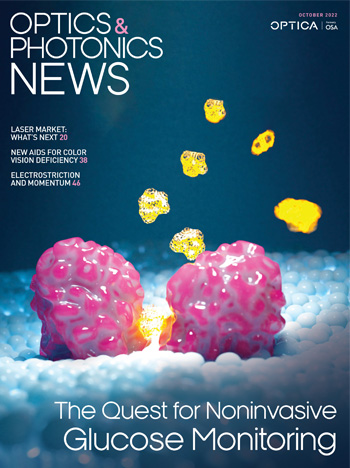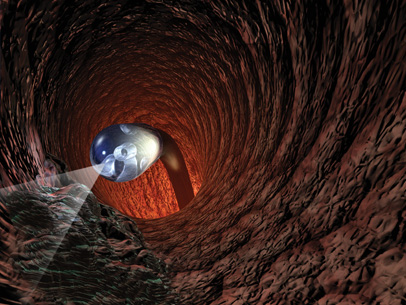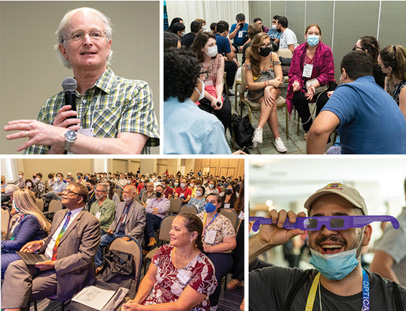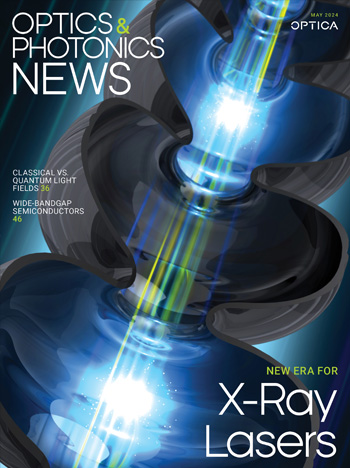
October 2022 Issue
Feature Articles
The Quest for Noninvasive Glucose Monitoring
Countless research groups have tried to invent a noninvasive glucose sensor and ultimately failed. Can a new generation of optics technologies provide a path to success?
by Meeri KimNew Aids for Color Vision Deficiency
People with some color-related genetic vision problems now have more options for getting through everyday life.
by Patricia DaukantasSqueezing In on an Electromagnetic Controversy
Recent measurements of electrostriction—a body force term commonly excluded from calculations of electromagnetic force and momentum density—cast new light on a long-standing debate in the history of electrodynamic theory.
by N.G.C. Astrath, B. Anghinoni, T. Požar, I. Brevik and S.E. BialkowskiDepartments and Columns
Research and Industry News
Associative learning / Birefringent art / Ultrathin probe / Nanomotors / Two-qubit gate / Lasers and the eye / Better lidar / Lumentum / Fraunhofer / Silicon photonics / Steadier satellites
Lasers & the Human Eye
Accidental exposure to a single direct or reflected laser beam can cause irreversible damage to the human eye—depending on the wavelength, output and exposure duration.
Looking Back—and Ahead—at the Laser Market
For laser and optics companies, revenues and net income continue to climb, but soft stock prices reflect widespread investor uncertainty.
Toward Programmable Microscopes
At FiO LS 2022, physicist Monika Ritsch-Marte will talk about using spatial light modulators to enable customizable views and deep tissue imaging.
Art and Light in Ukraine
After a brief interruption, Mykola Kabluka and his team at Ukraine-based Expolight are once again finding a way forward with light.
Making Lasers Tunable
Since the laser’s first demonstration in 1960, scientists have worked to expand the range of wavelengths the devices can emit.
ADVERTISEMENT
ADVERTISEMENT
Also in this Issue

Our Most Important Responsibility
Protecting Earth’s environment is our most important responsibility.

30, 20, and 10 Years Ago in OPN
Laser gynecology; dye transfer print process; polarimetric imaging

News from the Society
Eni award / Fulbright for Qiao / Online industry meetings / Optica Fellow stories / LAOP / New Edmund Optics chair / Optica Community / CLEO Pacific Rim / Advanced Photonics / Falling Walls / Thank you, editors and volunteers
Thank You to Our Donors
The Optica Foundation recognizes and fosters excellence in the next generation of the field.
Light Bird
A focused femtosecond laser pulse interacts with a glass slide—creating a colorful flying-bird pattern. The shiny colors denote the strong laser-induced breakdown.

![Infinity Mirrored Room– Brilliance of the Souls 2014 by artist Yayoi Kusama. [© YAYOI KUSAMA]](https://opnmedia.blob.core.windows.net/$web/opn/media/images/articles/2024/0724/departments/202407-cover-web.jpg?ext=.jpg)
![An experimental scheme demonstrated by researchers at Princeton and Yale universities, USA, can convert physical noise into errors that can be corrected more easily. [F. Wojciechowski, Princeton University]](https://opnmedia.blob.core.windows.net/$web/opn/media/images/articles/2024/0624/departments/202406-cover-web.jpg?ext=.jpg)
